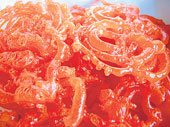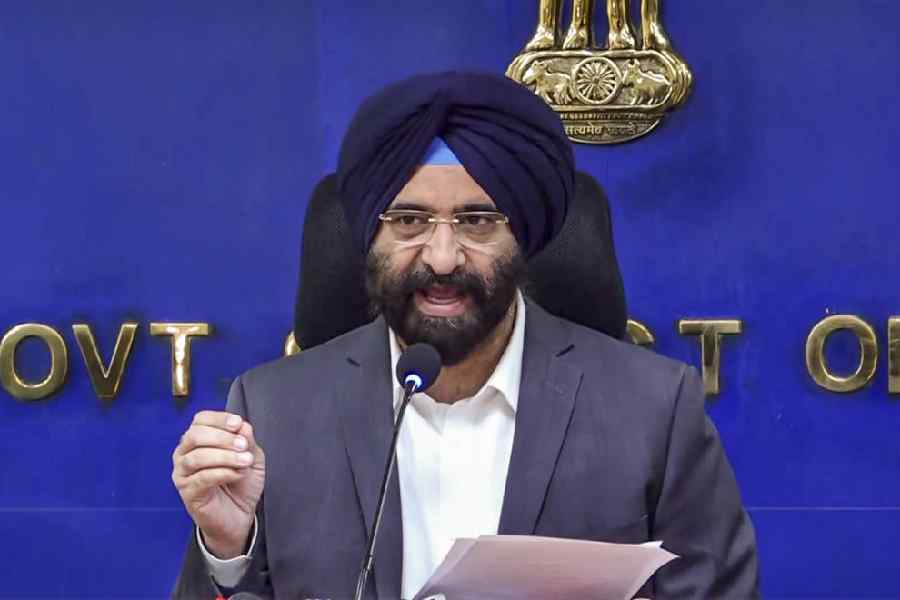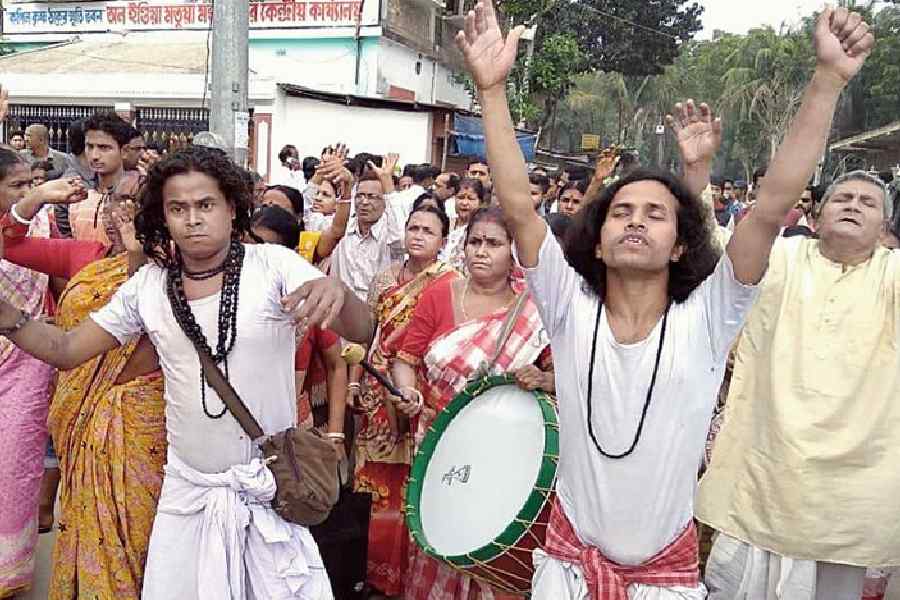 |
| Applied jalebi: How to count your strategies before they hatch |
Buddhadeb Bhattacharjee must have a wide range of interests — from management practice to applied sociology. At least the books he launches have a wide range.
On Monday he launched a book called Jalebi Management written by Shombit Sengupta, who hails from Kanchrapara but is now a French national. The chief minister described the author as “a young artist from Kanchrapara who has made it big as a corporate strategist by combining his artistic skills with marketing strategies”. Well, we are very kind to people who do well abroad — Sengupta was 19 years old in 1973.
The chief minister also seemed to justify his presence at the launch by saying Sengupta was the son of a dedicated party-worker, to which a collective “Ooooooo” went up from the photographers.
It is not clear, however, whether the book is about any art other than selling – for Sengupta basically tries to say that if the West can sell chips and pretzels to us, we can sell jalebis back to them. There are other food metaphors — the book is subtitled ‘All stakeholders can enjoy a bite’.
But just a few days ago, Bhattacharjee had launched a book called Discourse on Applied Sociology edited by Samir Dasgupta and Robyn Driskell. The book is a far cry from jalebis — it comes in two volumes, subtitled ‘Theoretical Perspectives’ and ‘Practising Perspectives’ respectively. The chief minister said he even had read the book and could not agree more with the point that the developed world could not be expected to give much to the developing world. Jalebi or Joseph Stiglitz, Mr Bhattacharjee? Marx or Mammon? It’s all as complicated as a jilipir pyanch, as the Bengali phrase goes.
Kintals of Calcutta
 |
| Plastic Priest: Sri Sumbajee in Pirates of the Caribbean: At World’s End |
Creole was once a popular language in Calcutta. But it died too soon.
In 1909, a British writer H.E.A. Cotton first observed the Kintals —the Creole population descending from African slaves and Portuguese soldiers — fading away. The Kintals were here from the time emperor Shah Jahan’s storm-troopers razed the church at Bandel in 1640.
For two centuries, the language of the Kintals was the lingua franca for all the English, Dutch, Portuguese, French, Austrian and Belgian conquistadors who sought to “interact”. Even in 1811, Christians in Calcutta preferred to talk in the Portuguese Creole of the Kintals than trouble His Majesty’s English. As the star of Calcutta rose, many Kintals migrated to the new city in the beginning of the 18th Century. Some became clerks, cooks and ayahs. Others joined the free societies of the Rogue’s River — one of the Sunderban channels joining the lower Hooghly from the eastward (the present Chingrir Khal, entering immediately below Diamond Harbour). Small pirate vessels belonging to Kintals, alongside dreaded Arakan rovers and Mugg boats, plundered British ships going up and down the Hooghly in the 17th and 18th Centuries.
The British assigned separate quarters within the palisades to more than 2,000 ebony-skinned Kintals, finding them “a serious incumbrance to the garrison”, during the siege of Calcutta in 1756. John Zepaniah Holwell, who helped popularise the myth of ‘the Black Hole of Calcutta’ after the sack of Calcutta by Siraj’s troops, disparagingly describes them as “Feringys”— the “black mustee Portuguese Christians” distinct from the Anglo-Indians. “As they were then the only people that kept fowls, the place was named Moorghihatta” (presently the region adjacent to the present Brabourne Road flyover).
In the 1750s, Kintals in Calcutta “swarmed from Boithakkhana to Dhurumtollah”. Cotton found some Kintals living neighbours to Chinese shoemakers and cane-workers of Bentinck Street, in the early years of the 20th Century.
Nothing of the old senors survive now beyond the religious allegiances, a few ancient images on the domestic altars, and forgotten dishes and sweets like “Bindaloo, Foogath, Plantifrith, Bollcomardo and Mel de Rose”. Only schlock historical whispers persist in the asides of a Sri Sumbajee, the plastic “Hindu priest”, who plays pirating with Johnny Depp and East India Company at world’s end.
(Contributed by Deeptanil Ray)











